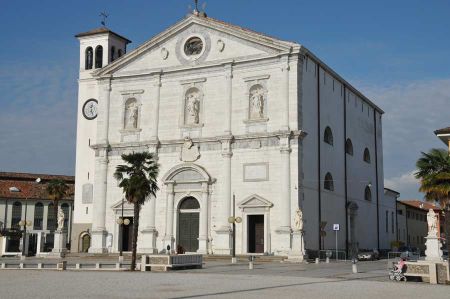Palmanova on the Ciclovia Alpe Adria cycle path
- Written by Portal Editor
To further explore the Alpe Adria cycle path and other places worth visiting on the long-distance cycle path, we also wanted to ride the section to Palmanova.
As already mentioned, the journey from the Camper Club area in Staranzano to Cervignano is unfortunately not yet passable on cycle paths separated from road traffic, we therefore switched to less traveled roads. From Cervignano we then used the asphalted Alpe Adria cycle path, which leads largely parallel to the country road and in sections through beautiful avenues of plane trees into the town of Palmanova. On the way, the bells of the bell tower of Aquileia could be clearly heard, but more on that later.
Small town Palmanova next to Udine
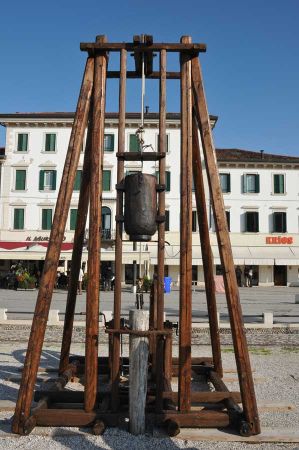 Today Palmanova is a small town with a good 5,500 inhabitants, which is located south of Udine directly on the motorway triangle of the A4 (Venice-Trieste) and the A23 (junction to Villach). The distance to Udine is about 20 km, to Venice about 120 km, this in advance for a description of the location. At first we only "came across" the place Palmanova because we noticed the interesting "shape" of the city on the map: an even, star-shaped floor plan, which, of course, would be particularly clear when viewed from high above.
Today Palmanova is a small town with a good 5,500 inhabitants, which is located south of Udine directly on the motorway triangle of the A4 (Venice-Trieste) and the A23 (junction to Villach). The distance to Udine is about 20 km, to Venice about 120 km, this in advance for a description of the location. At first we only "came across" the place Palmanova because we noticed the interesting "shape" of the city on the map: an even, star-shaped floor plan, which, of course, would be particularly clear when viewed from high above.
Palmanova was actually laid out as a planned military town at the end of the 16th century and, surprisingly, its typical, star-shaped floor plan has been completely preserved to this day. The founding date of the military city is October 7, 1593, the 22nd anniversary of the victory of Lepanto and the day of Saint Justina of Padua, who was designated the patron saint of the place. Palmanova was laid out as a fortress city of the Republic of Venice to protect against the Turks advancing across the Balkans. Above all, however, the city was to be developed into the most important land base for the Venetians - a plan that subsequently became meaningless.
200 Years later Palmanova was conquored by Napoleon
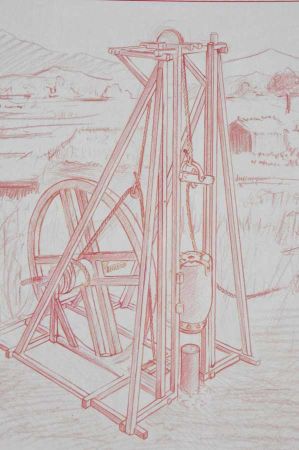 Later, the fortress served as a defense against the Habsburgs, who ruled the neighboring Friuli and Gorizia. The city fulfilled this task for over two hundred years before it was conquered by Napoleon, who ceded Veneto to Austria in the Peace of Campo Formio in 1797, incorporated it into his kingdom of Italy from 1806 - 1814, but then had to cede it to the Austrians. The capitulation of Venice was signed in Palmanova.
Later, the fortress served as a defense against the Habsburgs, who ruled the neighboring Friuli and Gorizia. The city fulfilled this task for over two hundred years before it was conquered by Napoleon, who ceded Veneto to Austria in the Peace of Campo Formio in 1797, incorporated it into his kingdom of Italy from 1806 - 1814, but then had to cede it to the Austrians. The capitulation of Venice was signed in Palmanova.
In 1866 Palmanova finally fell to Italy. During the First World War, Palmanova was an important base for the Italians in the hinterland of the Isonzo front; accordingly, military hospitals and military training areas were laid out here.
Palmanova was planned and implemented as an ideal city type with a radial road network. Special features were relatively wide, regular streets, so that the soldiers from the center (parade ground in the city center, which in its gigantic size looks absolutely oversized for the small town of Palmanova today) could get to the defenses on the city walls as quickly as possible. The commanding officers lived in the center, the soldiers of the line all around and the mercenaries along the fortifications.
The city gates were designed by Vincenzo Scamozzi
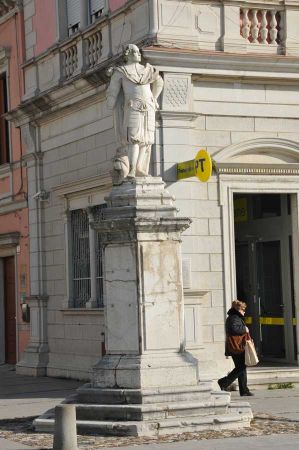 The three large city gates Porta Aquileia, Porta Udine and Porta Cividale have also been preserved to this day, in some cases even with their early baroque porches. The gates were probably designed by Vincenzo Scamozzi, a renowned architect from Vicenza. The three outer fortress rings were laid out from the inside to the outside and form a regular hexagon or a nine-pointed star. The innermost ring with the flood ditch (fossato) was built between 1593 and 1620, and between 1665 and 1683 another nine (smaller) bastions (so-called "ravelins") were inserted into the respective spaces between the nine bastions. Napoleon finally expanded the facility again by building nine, the older bastions in front of the lunettes.
The three large city gates Porta Aquileia, Porta Udine and Porta Cividale have also been preserved to this day, in some cases even with their early baroque porches. The gates were probably designed by Vincenzo Scamozzi, a renowned architect from Vicenza. The three outer fortress rings were laid out from the inside to the outside and form a regular hexagon or a nine-pointed star. The innermost ring with the flood ditch (fossato) was built between 1593 and 1620, and between 1665 and 1683 another nine (smaller) bastions (so-called "ravelins") were inserted into the respective spaces between the nine bastions. Napoleon finally expanded the facility again by building nine, the older bastions in front of the lunettes.
There is a city museum as well as a military museum on the history of the development of the military city of Palmanova, the theater with a front made up of six columns and a number of military buildings (magazines, arsenals), which we can quickly find on our tour through the town thanks to the simple city map, are also worth seeing could. The Palazzo del Provvedittore Generale (1598) was built as the seat of the local representative of the Republic of Venice. The loggia of the Great Guard, Santo Monte de Pietá with a Pieta statue dates from the end of the 17th century - the building once served to care for the poor in the city. The Palazzo Del Governatore dell'Armi is also imposing as the seat of the military commander of the fortress, as is the Palazzo del Ragionato, the seat of the treasurer of Palmanova. The municipality's town hall is located in Piazza Grande. In 1960 the city was declared a national monument.
Palmanova - city map not rearly necessary
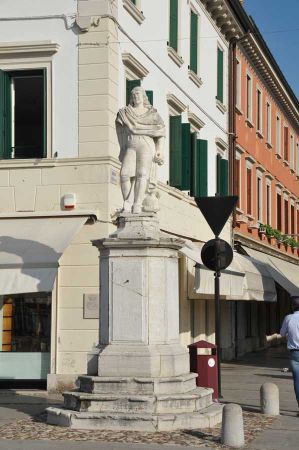 There is a city museum as well as a military museum on the history of the development of the military city of Palmanova, the theater with a front made up of six columns and a number of military buildings (magazines, arsenals), which we can quickly find on our tour through the town thanks to the simple city map, are also worth seeing could. The Palazzo del Provvedittore Generale (1598) was built as the seat of the local representative of the Republic of Venice. The loggia of the Great Guard, Santo Monte de Pietá with a Pieta statue dates from the end of the 17th century - the building once served to care for the poor in the city. The Palazzo Del Governatore dell'Armi is also imposing as the seat of the military commander of the fortress, as is the Palazzo del Ragionato, the seat of the treasurer of Palmanova. The municipality's town hall is located in Piazza Grande. In 1960 the city was declared a national monument.
There is a city museum as well as a military museum on the history of the development of the military city of Palmanova, the theater with a front made up of six columns and a number of military buildings (magazines, arsenals), which we can quickly find on our tour through the town thanks to the simple city map, are also worth seeing could. The Palazzo del Provvedittore Generale (1598) was built as the seat of the local representative of the Republic of Venice. The loggia of the Great Guard, Santo Monte de Pietá with a Pieta statue dates from the end of the 17th century - the building once served to care for the poor in the city. The Palazzo Del Governatore dell'Armi is also imposing as the seat of the military commander of the fortress, as is the Palazzo del Ragionato, the seat of the treasurer of Palmanova. The municipality's town hall is located in Piazza Grande. In 1960 the city was declared a national monument.
Today a trim route - once leading to bunkers
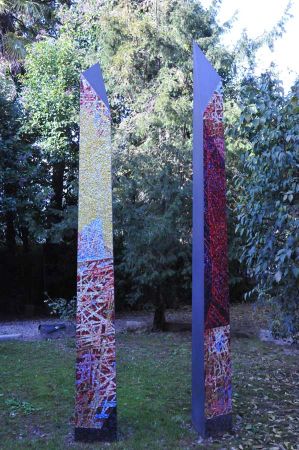 The imposing dimensions of the city with its fortification rings only become clear when you climb the city ramparts and completely circle the city. Incidentally, this circular route is even offered as a trim route. What a system of trenches, tunnels and bunkers, it is hard to believe how much effort was put into creating it. We were really impressed by the thickness of the ramparts and city gates, the huge parade ground in the center and the ostentatious buildings, and sometimes pushed the original meaning and purpose of the complex itself into the background.
The imposing dimensions of the city with its fortification rings only become clear when you climb the city ramparts and completely circle the city. Incidentally, this circular route is even offered as a trim route. What a system of trenches, tunnels and bunkers, it is hard to believe how much effort was put into creating it. We were really impressed by the thickness of the ramparts and city gates, the huge parade ground in the center and the ostentatious buildings, and sometimes pushed the original meaning and purpose of the complex itself into the background.
After our extensive circular hike, there is a short period of relaxation at the Piazza Grande with a real Italian late macchiato or cappuccino, hmmm delicious. But now it's time to get back on the bikes, because there are still around 18 kilometers back.
Please read as well:
Camper Club Staranzano - alternative to the campsite
Aquileia – youngsters learning to ring the bells
-
 Palmanova - planned town on military aspects
Palmanova - planned town on military aspects
Palmanova - planned town on military aspects
Palmanova - planned town on military aspects
-
 Palmanova - planned town on military aspects
Palmanova - planned town on military aspects
Palmanova - planned town on military aspects
Palmanova - planned town on military aspects
-
 Palmanova - planned town on military aspects
Palmanova - planned town on military aspects
Palmanova - planned town on military aspects
Palmanova - planned town on military aspects
-
 Palmanova - planned town on military aspects
Palmanova - planned town on military aspects
Palmanova - planned town on military aspects
Palmanova - planned town on military aspects
-
 Palmanova - planned town on military aspects
Palmanova - planned town on military aspects
Palmanova - planned town on military aspects
Palmanova - planned town on military aspects
-
 Palmanova - planned town on military aspects
Palmanova - planned town on military aspects
Palmanova - planned town on military aspects
Palmanova - planned town on military aspects
-
 Palmanova - planned town on military aspects
Palmanova - planned town on military aspects
Palmanova - planned town on military aspects
Palmanova - planned town on military aspects
-
 Palmanova - planned town on military aspects
Palmanova - planned town on military aspects
Palmanova - planned town on military aspects
Palmanova - planned town on military aspects
-
 Palmanova - planned town on military aspects
Palmanova - planned town on military aspects
Palmanova - planned town on military aspects
Palmanova - planned town on military aspects
https://www.alaturka.info/en/italy/trieste/5280-palmanova-on-the-ciclovia-alpe-adria-cycle-path?tmpl=component&print=1&layout=default#sigProId6877a7ea20
